Project X
From the deaths of thousands through the use of nitrogen mustard gas in both World Wars, it proved to be beneficial as it saved millions of lives because nitrogen mustard gas went from warfare to a cancer drug. "Compound X" was used to refer to nitrogen mustard gas as it was being developed in secret.
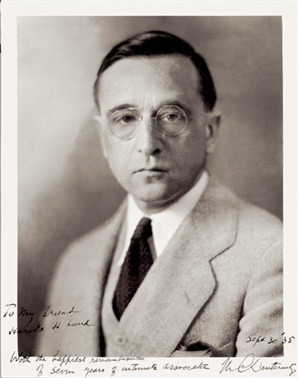
Dean of Yale Medical School (1920-1935), Milton C. Winternitz. Yale School of Medicine. 1998.
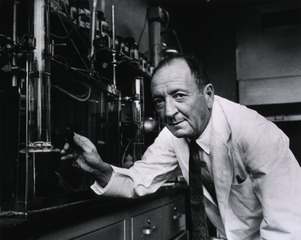
Alfred Gilman (1908-1984), American Pharmacologist and Nitrogen Mustard Gas Researcher. National Library of Medicine. 1963.
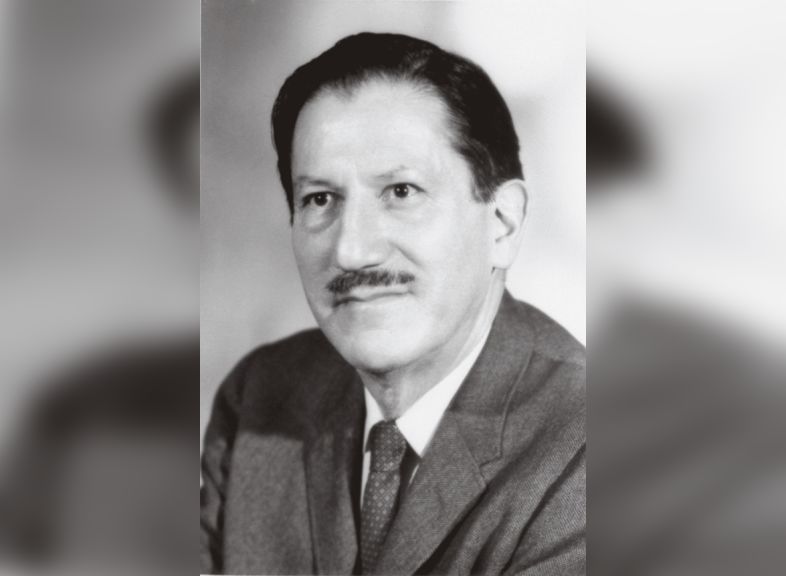
Louis Goodman (1906-2000), American Pharmacologist and Graduate From John Hopkins Medical School. National Library of Medicine. 1965.
"Medical school dean Milton C. Winternitz arranged a government contract to investigate new chemical warfare agents. In 1942, he assigned two research pharmacologists to study nitrogen mustard compounds, newly developed relatives of mustard gas. The two were Alfred Gilman (1908–84) ’28S, ’31PhD, and Louis S. Goodman (1906–2000), a graduate of the Johns Hopkins medical school." - Yale Alumni Magazine. 2011.
Gilman and Goodman revealed their findings about "ways to counteract X’s toxicity, they noticed that it killed lymph and white blood cells in rabbits, suggesting that it might work on malignant tumors" (Schniff) to Gustaf E. Lindskog, a former thoracic surgeon and former chair of surgery at the Yale School of Medicine. After reviewing Gilman and Goodman's findings, Lindskog allowed them to test their first form of chemotherapy on patient J.D. at Lindskog's clinic in 1942.
The Patient
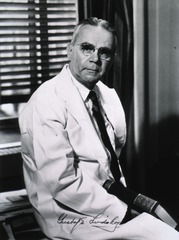
Gustaf E. Lindskog (1903-2002), Former Thoracic Surgeon and Chair of Surgery at Yale School of Medicine. National Library of Medicine. 1954.
"J.D. was an unmarried 47-year-old Polish immigrant who had worked in a Connecticut ball bearing factory. He had been in pain for some months before he came to the clinic, where he was first treated in January 1941 for lymphosarcoma in his neck and cervical region. Multiple radiation treatments were at first successful but by the end of the year had no effect, and he was in great distress." - Judith Ann Schniff. Yale Alumni Magazine. 2011.
"The patient’s outlook is utterly hopeless on the present regimen. Because the end seems near he should be in the hospital. Dr. Lindskog will investigate the possibility of obtaining one of the newer chemicals which are lymphocidal. Immediate admission arranged."
~ Notes from Medical Letter on August 25, 1942
On August 27, 1942, J.D. was given the first ten doses of chemotherapy. His condition improved but his white cell blood count began to decline. To accommodate for the lack of white blood cells, they provided him with blood transfusions.
"But by mid-October his lymphosarcoma was back. The second cycle of dosage had only short-term effectiveness, showing that the cancer cells were beginning to develop resistance. (To combat this problem, chemotherapy now combines several different compounds.) The third and final six-day dosage was started on November 6. It had little effect. JD’s tumors continued to grow, and he died on December 1, his 96th day in the hospital." - Judith Ann Schniff. Yale Alumni Magazine. 2011.
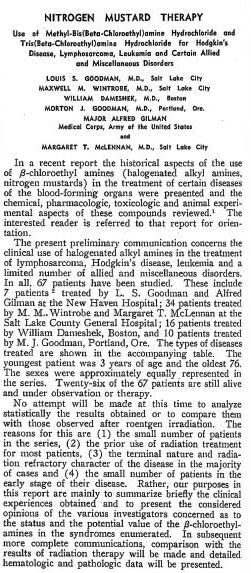
Medical Notes on the First 67 Patients Treated Using Chemotherapy. JAMA. 1946.
“Without Lindskog’s initiative, this first use of an intravenous chemotherapeutic agent would not have taken place.
~ John E. Fenn and Robert Udelsman. 2011.